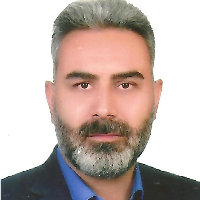Citizen participation in urban management and identifying its economic and social determinants, Ilam
- Participation of citizens in various urban affairs brings many benefits such as enhancement of social capital, satisfaction, and improvement of the civil society.
- A condition for achievement of sustainable development in today’s cities is the participation of citizens in its various affairs.
- The constituent components of citizens’ participation include mental-spiritual participation, participation in provision of human resources, political participation, and financial participation.
- A low level of participation of citizens in urban management can be attributed to various factors, including the weakness of city managers and the rules and regulations concerning their selection, citizens’ lack of concern, etc.
Citizens’ participation in various matters of urban spaces is one of the most important issues in achievement of sustainable urban development, an acceptable level of which is one of the most significant concerns of policy makers and urban planners. For achievement of sustainable development in Ilam, a border city in Iran, it is of particular importance to investigate the status of citizen participation in urban management and identify the factors affecting the level thereof, which makes up the main purpose of this study.
Theoretical Framework:
Living in a democratic society requires people to play an active role in various aspects of their lives (Predescu & Darjan, 2010: 3241). Citizen participation is of great importance in systems claiming democracy (Ginieniewicz, 2007: 328) and is vital for any democratic society, and democracy can be developed only through involved, informed citizens. In addition, it is important to have citizens ready to take responsibility for changing the reality of today’s world (Manganelli et al., 2012: 1476). For this reason, public participation is seen today as a new strategy in development (Khajeh Shahkoohi et al., 2015: 4). An inductive look at the existing patterns of participation in the world indicates that they can be classified according to three different criteria: the type of participation (1- decision-making, 2- financing, and 3- manpower), the field of participation in activities (1- construction, 2- environment, 3- ensuring city safety, 4- monitoring, 5- municipal services, and 6- social welfare), and the type of organization (1- spontaneous, self-motivated organizations and 2- formal, motivated organizations). Of course, it is also possible to classify participation patterns based on the activity to perform which the participation is made (Rezaei and Asyabani, 2018: 146).
In a general conclusion, it can be stated that citizen participation in urban management involves different aspects and a particular position in the issue of sustainable urban development. However, different factors affect the level of citizen participation in urban management, which can vary by urban space.
This is a descriptive-correlational applied quantitative study using the analysis of covariance-variance among correlation methods. The research area is Ilam, and the research population includes 194030 citizens of the city who are over 18 years old. 383 citizens were selected based on Cochran’s formula using stratified random sampling. In addition to documentary studies, the main research tool for data collection was a researcher-made questionnaire. It should be noted that the design of the questionnaire used to measure citizen participation in urban management was based on the works by Amirahmadi et al. (2016) and Meymandi Parizi (2017). The validity of the research tool was evaluated and confirmed through consultation of experts and university teachers (face validity) and also using convergence. Combined reliability coefficients (greater than 0.7) and Cronbach’s alpha (greater than 0.7) were used to measure reliability. The two methods of descriptive statistics (frequency, frequency percentage, mean, and standard deviation) and inferential statistics (correlation analysis and structural equation modeling) were used to analyze the data. It should be noted that one statistical method used in the field of structural equation modeling is partial least squares, calling for the use of relevant software such as SPSS and SmartPLS to analyze the data.
The results of the structural model analysis demonstrated that the variable of satisfaction with the performance of urban managers exhibited a significant effect on other independent variables. Thus, it had the greatest impact on the variables of proper urban governance (with an impact factor of 0.275), job satisfaction (with an impact factor of 0.262), and social capital (with an impact factor of 0.255). On the other hand, the variable of satisfaction with the performance of urban managers exhibited the slightest effect (with an impact factor of 0.05) on the level of citizen participation in urban management, where we can point out the low level of citizen satisfaction with the performance of urban managers (2.37 on average).
The results demonstrated that there were significant relationships between citizen participation in urban management in the study area (the dependent variable of the research) and job satisfaction, satisfaction with the performance of urban managers, social capital, proper urban governance, quality of life (negative correlation), and sense of belonging to the place. Thus, it can be stated that the level of citizen participation decreases and increases as the level of each of these variables is decreased and increased. The results obtained from the structural analysis model (with the partial least squares method) indicated that the independent research variables were capable of explaining 75.8% of the variance in Ilam citizens’ participation in urban management. The values of the coefficients for the impacts of each of those variables on the dependent variable include 0.35 (quality of life), 0.05 (satisfaction with the performance of urban managers), -0.075 (social capital), 0.131 (job satisfaction), 0.372 (proper urban governance), and 0.275 (spatial affiliation).
-
Identifying the most important obstacles to citizen participation in the decision-making process of Islamic councils in Ilam)
Davood Jamini, *
Research and Urban Planning, -
Explaining the physical-spatial structure of urban neighborhoods on the behavior patterns of pedestrian (Bagh Faiz neighborhood - District 5 of Tehran Municipality)
Omid Ali Madadi, , Saba Jahangir
journal of Urban environment planning and development, -
Stratification and prioritization of assets from the point of view of passive defense(Case Study: Tehran)
Mohsen Kahuri *, Alireza Abdullahzadeh Fard, Ali Shams-Al-Dini
Journal of safe city, -
Identification and analysis of the most important economic and social impacts of the covid-19 pandemic on tourism sample areas (case study: Sarab Ravansar, Kermanshah province)
Davood Jamini, , , Mohammadreza Ghaedi *
Human Geography Research Quarterly,




